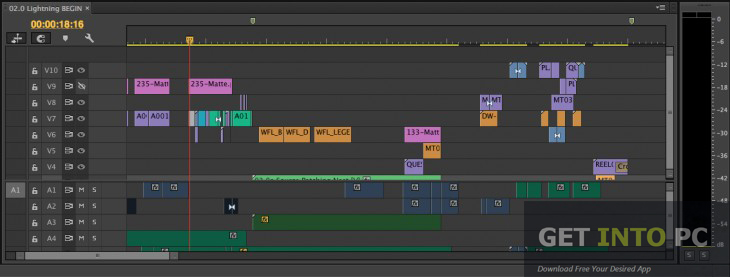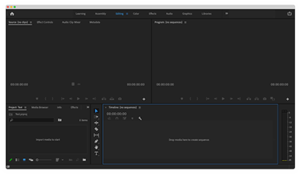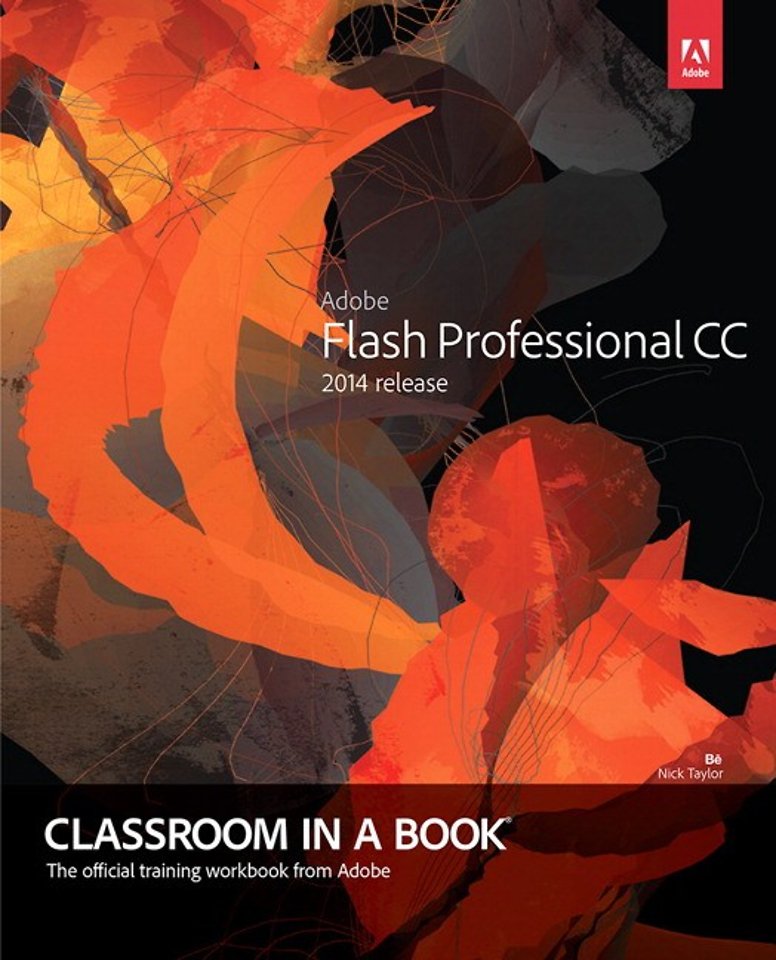Home > Store
- By Joseph Labrecque
- Published Sep 4, 2014 by Peachpit Press. Part of the Learn by Video series.

This is the Rough Cut version of the printed book. The fastest, easiest, most comprehensive way to learn Flash Professional CC (2014 release) Classroom in a Book®, the best-selling series of hands-on software training workbooks, offers what no other book or training program does–an official training series from Adobe Systems Incorporated, developed with the support of Adobe product experts.
Reengineered from the ground up, 64-bit Flash Professional CC is more modular and delivers unprecedented speed and stability. Easily manage multiple large files, publish more quickly and experience a more responsive timeline. Starting today, you can use the table below for a complete list of all CC 2014 updates for all major products for Windows See here for Mac These download links go to the authentic and original CC 2014 update installers residing on Adobe’s servers, are guaranteed genuine, safe, legal, and will not change. In most cases there are no.
Your browser doesn't support playback of this video. Please download the file to view it.
DVD
- Sorry, this book is no longer in print.
Related Products
Online Video
Adobe Photoshop Cc 2014 Update

Register your product to gain access to bonus material or receive a coupon.
Description
- Copyright 2015
- Dimensions: 5-3/8' x 8-1/4'
- Edition: 1st
- DVD
- ISBN-10: 0-13-392809-8
- ISBN-13: 978-0-13-392809-9

This critically-acclaimed interactive training program from Adobe Press offers exceptional quality high-definition video to teach the fundamentals of Adobe Flash Professional CC (2014 release)
Including more than 6 hours of video tutorials, the course comes complete with lesson files, assessment quizzes, and review materials. Experienced instructor Joseph Labrecque presents a comprehensive introduction to Flash Professional, including best practices as well as fundamental concepts of animation and interactivity. Covered topics include working with graphics, sound, tweens and masks, and exporting files to various formats, and how to work within the Creative Cloud.
The video is wrapped in a unique interface that allows you to jump to any topic and also bookmark individual sections for later review. The unique “Watch and Work” mode shrinks the video into a small window to allow you to work alongside in Adobe Flash Professional as you view the video. Project files used in the lessons are included on the disc so you can practice what you’ve learned. At the end of every lesson, you can test your knowledge by taking interactive quizzes.
Duration: 6 HR
User Level: Beginning/Intermediate
Closed-Captioning in English
System Requirements:
Mac OS X 10.6, Microsoft Windows XP, or higher
1 GHz processor or higher
Adobe Flash Professional Cc 2014 Serial Key
2 GB RAM or higher
1 GB free HD space (does not include lesson files)
Hardware: DVD-ROM drive
Please Note:
• This DVD-ROM can be viewed on your computer, but it will NOT play in a DVD movie player.
• The course uses pop-ups; please enable them in your browser. For more information on how to enable Pop-ups please see our Learn By Video FAQ page at http://www.peachpit.com/LBVFAQ
More Information
Other Things You Might Like
- Book $47.99
- Web Edition $38.39
- eBook (Watermarked) $38.39
Easing
Easing refers to the way in which a motion tween proceeds. You can think of easing as acceleration or deceleration. An object that moves from one side of the Stage to the other side can start off slowly, then build up speed, and then stop suddenly. Or, the object can start off quickly, and then gradually slow to a halt. Your keyframes indicate the beginning and end points of the motion, but the easing determines how your object gets from one keyframe to the next.

A simple way to apply easing to a motion tween is from the Properties inspector. Easing values range from −100 to 100. A negative value creates a more gradual change from the starting position (known as an ease-in). A positive value creates a gradual slowdown (known as an ease-out).
A more advanced way of applying easing is to use the new Motion Editor, which you’ll learn about in the next lesson.
Splitting a motion tween
Easing affects the entire span of a motion tween. If you want the easing to affect only frames between keyframes of a longer motion tween, you should split the motion tween. For example, return to the 04_workingcopy.fla file of the cinematic animation. The motion tween of the car in the Left_car layer begins at frame 75 and ends at frame 190, at the very end of the Timeline. However, the actual movement of the car starts at frame 75 and ends at frame 100. You’ll split the motion tween so you can apply an ease to the tween just from frames 75 to 100.
In the Left_car layer, select frame 101, which is the frame just after the second keyframe where the car ends its movement.
Right-click/Ctrl-click on frame 101 and choose Split Motion.
Flash cuts the motion tween into two separate tween spans. The end of the first tween is identical to the beginning of the second tween.
In the Middle_car layer, select frame 94, right-click/Ctrl-click, and choose Split Motion.
Flash cuts the motion tween into two separate tween spans.
In the Right_car layer, select frame 107, right-click/Ctrl-click, and choose Split Motion.
Flash cuts the motion tween into two separate tween spans. The motion tweens of all three cars are split.
Setting eases of a motion tween
You’ll apply an ease-in to the motion tweens of the approaching cars to give them a sense of weight and decelerate as real cars would.
In the Middle_car layer, select any frame between the first and second keyframes of the first motion tween (frame 70 to frame 93).
In the Properties inspector, enter 100 for the Ease value.
Flash applies an ease-out effect to the motion tween.
In the Left_car layer, select any frame between the first and second keyframes of the first motion tween (frame 75 to frame 100).
In the Properties inspector, enter 100 for the Ease value.
Flash applies an ease-out effect to the motion tween.
In the Right_car layer, select any frame between the first and second keyframes of the first motion tween (frame 78 to frame 106).
In the Properties inspector, enter 100 for the Ease value.
Flash applies an ease-out effect to the motion tween.
Enable the Loop Playback option at the bottom of the Timeline, and move the front and rear markers to bracket frames 60 to 115.
Click Play (Return/Enter).
Flash plays the Timeline in a loop between frames 60 and 115 so you can examine the ease-out motion of the three cars.
